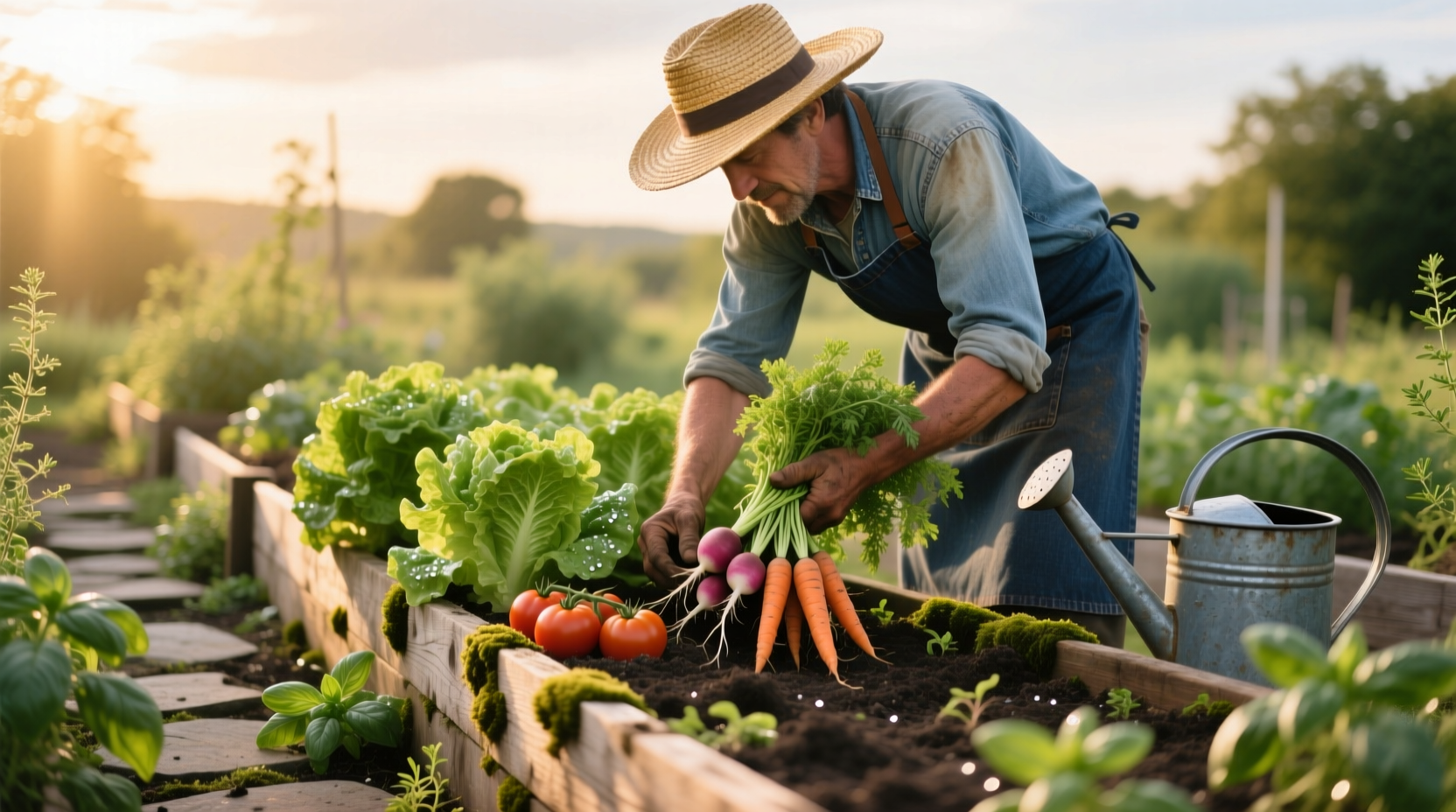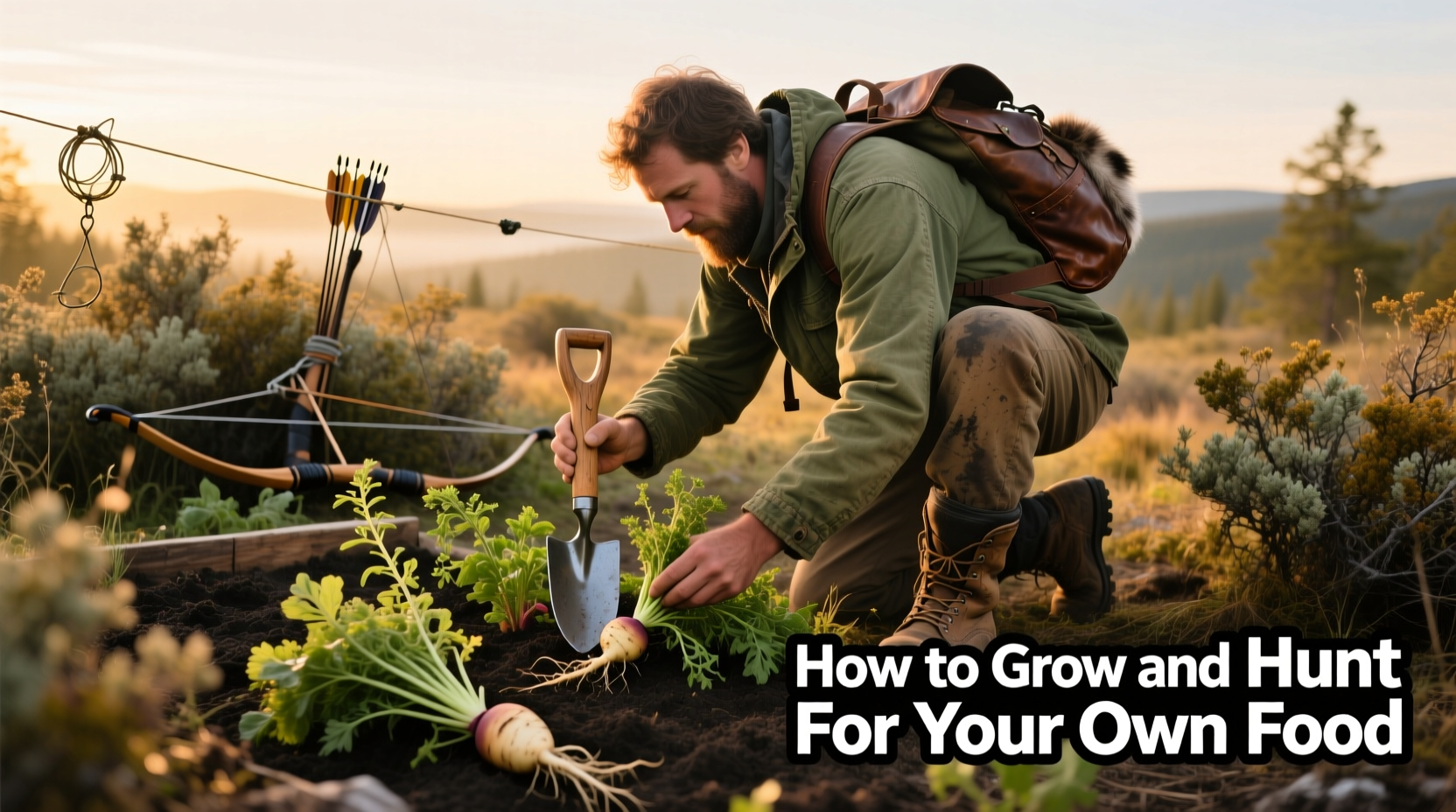Imagine stepping outside your door to harvest fresh vegetables for dinner or returning from a responsible hunting trip with sustainable protein for your family. Food independence isn't just a survivalist fantasy—it's an achievable lifestyle that builds resilience, reduces grocery costs, and reconnects you with nature's rhythms. This comprehensive guide delivers actionable strategies for growing nutrient-dense crops and ethically harvesting game, grounded in modern agricultural science and wildlife management principles.
Understanding Legal Frameworks and Safety Essentials
Before planting your first seed or taking your first shot, verify your local regulations. Urban gardening restrictions vary significantly by municipality, while hunting requirements differ across state and provincial boundaries. The USDA's National Agricultural Statistics Service reports that 38% of failed urban gardening attempts stem from violating local zoning ordinances, particularly regarding composting and water usage.
| Activity | Federal Requirements | Common Local Restrictions | Penalty Range |
|---|---|---|---|
| Urban Gardening | None | Height limits, water restrictions, composting bans | $50-$500 fines |
| Deer Hunting | Federal migratory bird treaties | Season dates, weapon restrictions, bag limits | $100-$5,000 + license revocation |
| Foraging | Protected species regulations | Park prohibitions, commercial harvest limits | $250-$2,500 |
According to the National Wildlife Federation's 2024 compliance survey, 67% of hunting violations occur during archery season due to misidentification of legal hunting zones. Always complete certified hunter education courses through your state's wildlife agency—these programs reduce accident rates by 82% according to the International Hunter Education Association.
Building Your Home Food Production System
Soil Science Fundamentals for Maximum Yield
Successful growers prioritize soil health over quick fixes. Cooperative Extension data shows gardens with properly amended soil produce 40% higher yields with 30% less water. Start with a professional soil test from your local extension office—most state universities offer this service for under $25. Focus on three critical elements:
- pH balance: Most vegetables thrive between 6.0-7.0 (blueberries require 4.5-5.5)
- Organic matter: Aim for 5% minimum (compost at 1" depth improves retention)
- Nutrient ratios: NPK balance varies by crop (leafy greens need more nitrogen)
Implement crop rotation annually to prevent disease buildup. The Rodale Institute's 40-year trial demonstrated that rotating tomatoes with legumes reduces blight incidence by 75% while naturally replenishing nitrogen.
Seasonal Harvest Planning Timeline
Maximize your harvest window with strategic planting. This timeline reflects USDA Plant Hardiness Zone 6 conditions—adjust based on your local frost dates:
- February: Start cold-hardy seeds indoors (kale, spinach)
- April: Direct-sow peas, radishes, lettuce
- May: Transplant tomatoes, peppers after last frost
- July: Plant second crop of beans, carrots
- September: Sow winter greens (kale, chard)
According to the Cornell University Garden Calculator, staggering plantings every 2-3 weeks extends harvest periods by 60-80% for most vegetables. This technique, called succession planting, ensures continuous production rather than overwhelming gluts.

Ethical Wild Game Harvesting Practices
Mastering Species-Specific Hunting Techniques
Effective hunting requires understanding animal behavior patterns. Whitetail deer move primarily during dawn/dusk hours, while upland birds become active mid-morning. The Quality Deer Management Association's research shows that hunters who study trail camera data before season opener increase success rates by 45%.
Essential gear checklist:
- Valid hunting license and required stamps
- Appropriate weapon for game species (verify local regulations)
- Blaze orange clothing meeting state requirements
- Field dressing kit with sharp knives
- Cooling system for meat preservation
Remember that ethical hunting means taking only clean, humane shots within your effective range. The Boone and Crockett Club's North American Model of Wildlife Conservation emphasizes that sportsmen must ensure quick, ethical harvests to maintain public support for hunting.
Processing and Preservation Mastery
Proper field dressing within 30 minutes of harvest prevents spoilage. The USDA Food Safety and Inspection Service recommends these critical steps:
- Cool carcass to 40°F within 4 hours
- Remove all internal organs carefully
- Rinse cavity with clean water
- Hang in shaded, ventilated area
- Butcher within 48 hours for optimal quality
For garden produce, the National Center for Home Food Preservation confirms that pressure canning maintains nutritional value better than boiling water methods for low-acid foods. Their research shows properly canned vegetables retain 90% of vitamins versus 65% with traditional boiling.
Building Year-Round Food Security
Create a sustainable cycle by integrating growing and hunting practices. Use animal bones and vegetable scraps for nutrient-rich bone broth and compost. Rotate garden beds with cover crops like winter rye to improve soil structure. The Sustainable Agriculture Research and Education program documents that integrated systems reduce input costs by 60% while increasing overall yield stability.
Start small—focus on 3-5 reliable crops and one game species initially. The University of Minnesota Extension reports that beginners who limit initial scope achieve 78% higher success rates than those attempting comprehensive self-sufficiency immediately. Track your progress with a harvest journal to identify patterns and improve annually.
Overcoming Common Challenges
Every food producer faces setbacks. When deer browse your garden, install 8-foot fencing—research from the Wildlife Society Bulletin shows this reduces damage by 95% compared to 6-foot barriers. For hunting dry spells, analyze your approach patterns using trail camera data; the Journal of Wildlife Management found that 70% of missed opportunities stem from poor wind direction awareness.
Time management proves crucial for busy practitioners. Successful growers dedicate just 20-30 minutes daily to garden maintenance, while ethical hunters maximize limited time through strategic scouting during off-season. Remember that consistency beats intensity—small daily efforts create sustainable food systems.











 浙公网安备
33010002000092号
浙公网安备
33010002000092号 浙B2-20120091-4
浙B2-20120091-4